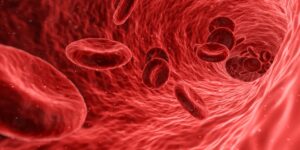Research conducted by a team of scientists from Kaunas universities, Lithuania, revealed that low-frequency ultrasound influences blood parameters. The findings suggest that ultrasound’s effect on haemoglobin can improve oxygen’s transfer from the lungs to bodily tissues.
The research was undertaken on 300 blood samples collected from 42 pulmonary patients. The samples were exposed to six different low-frequency ultrasound modes at the Institute of Mechatronics of Kaunas University of Technology (KTU).
The changes in 20 blood parameters were registered using the blood analysing equipment at the Lithuanian University of Health Sciences (LSMU) laboratories. For the prediction of ultrasound exposure, artificial intelligence, i.e. analysis of variance (ANOVA), non-parametric Kruskal-Wallis method and machine learning algorithms were applied. The calculations were made at the KTU Artificial Intelligence Centre.
The use of non-pharmaceutical treatment improves oxygen circulation and reduces blood pressure
KTU professors Vytautas Ostaševičius and Vytautas Jūrėnas say the ongoing research papers are related to blood platelet aggregation. The research of the KTU team revealed that the ultrasound’s impact on blood parameters is not limited to the platelet count – it also affects red blood cells (RBC), which can result in better oxygen circulation and lowered blood pressure.



